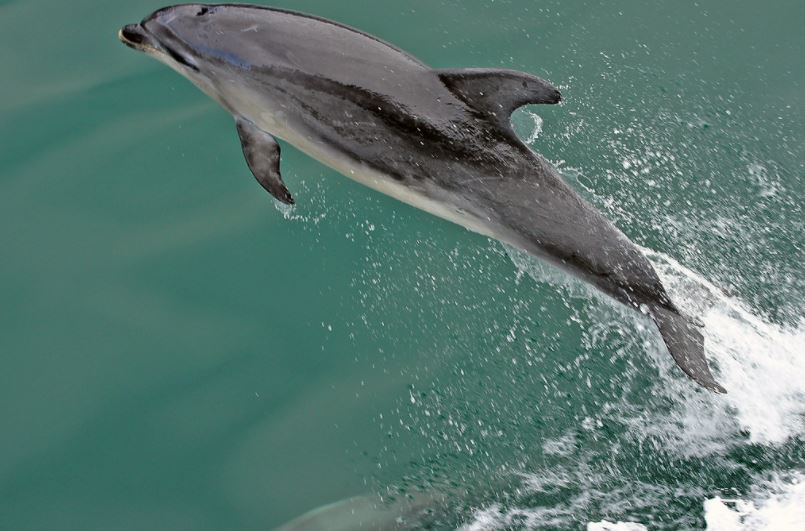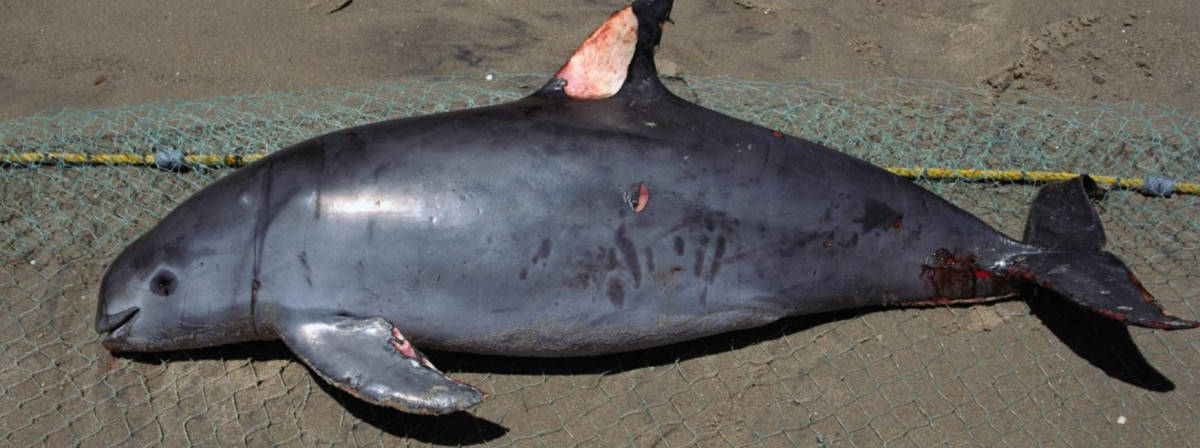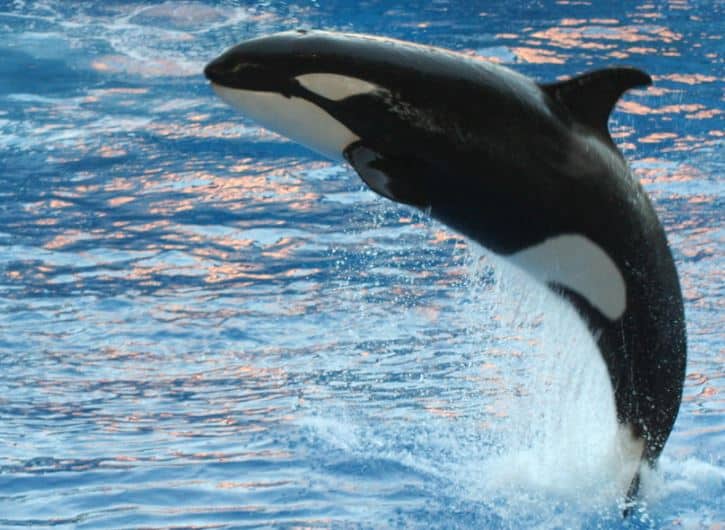Do you know about Animals with Flippers, and the function of Flipper? If not, then you are in the right place to know them.
In this Article, We discover the Animals with flippers chosen from across the world.
Let’s discover them in detail with pictures.
Table of Contents
Animals With Flippers:
Walrus

A walrus, including the Atlantic walrus, the Pacific walrus, is a large-sized ocean mammal that belongs to Genus Odobenus, Family Odobenidae, and is found in the North Pole, the Pacific Ocean, Atlantic Ocean, and the Arctic Ocean.
They have four flippers, two are fore flippers and two are hind flippers, that contain a brought surface or bottom for providing grip on the slippery snow and ice surfaces. Its triangular-shaped hind flippers contain five digits made of bone. Among them, three digits are larger than the two digits located at the outer side of the flippers.
While moving on the land, They flap its two fore-flippers and sometimes use its tusk to move forward by using them as an anchor on the ice surface. Surprisingly, It can achieve a speed of about 22 mph underwater while propelling itself through all four flippers.
Porpoises

A harbor porpoise is a small-sized porpoise that belongs to Genus Phocoena, Family Phocoenidae, and is found in coastal waters of the sub-Arctic, the North Atlantic, the North Pacific, the northwest coast of Africa.
They have a dark dorsal surface, faint gray lateral sides, a white color ventral surface along with flippers, dorsal fin, and tail fin. It has dark-colored flippers with a dark stripe that passes from the flipper to the eye. Its flippers are small, round with an oval shape. While the flukes are small, and curved with a median notch.
Its flipper, dorsal fins, and flukes help to achieve a speed of about 25 km per hour.
Amazon River Dolphin

An Amazon river dolphin, also known as the boto, and pink river dolphin, is a river dolphin that belongs to Genus Inia, Family Iniidae, and is found in Amazon, Bolivia, Brazil, Colombia, Ecuador, Guyana, Peru, and Venezuela.
The Amazon river dolphins have a pink color body, fluke, as well as pink colored flippers. Its flippers have four digits that can engage in continuous movement, and tail fins that are stronger enough to propel them to attain vertical movement.
Its strong flippers are used for steering, and swimming thus they can help to attain a speed of about 35 miles per hour in the river and estuaries.
Vaquita

A vaquita is a small-sized porpoise species that belongs to Genus Phocoena, Family Phocoenidae, and is found in the Gulf of California, Gulf of California, Mexico, and other parts of the ocean.
This marine mammal is the smallest known Cetacean, a Cetacean is a group of mammals including whales, dolphins, or porpoises. A vaquita is identified by its triangular dorsal fin, triangular flippers, rounded head, and eyes, and lips with unusual black patches. They have wider flippers that are triangular in shape, especially mature females of the vaquita have larger flippers than the males of the vaquita.
Surprisingly, the males of vaquita have a taller dorsal fin height than the female, whereas the females of vaquita have larger flippers than the males of the vaquita- that’s really competing and distinguishable features between them.
Beluga Whale

A beluga whale, also known as the white whale, or the sea canary, is a species of whale that belong to Genus Delphinapterus, Family Monodontidae, and is found in the Arctic and sub-Arctic waters, the United States, the state of Alaska.
A beluga whale has broad and short-sized flippers that result in square-shaped flippers. The combination of flippers, flexible neck and tail fin helps them to attain a speed of about 16 mph for short distances while pulling their body weights between 1,000-1,500 kg.
The pectoral flipper of beluga whales is actually a modified forelimb with the same skeletal element as the land mammals but are varied in size and adapted for aquatic life. In the flippers, the bones of each digit have thick cartilage pads.
Killer Whale

A killer whale, also known as an orca, is a toothed whale that belongs to Genus Orcinus, Family Delphinidae, and is found in all oceans, Antarctica, Norway, Alaska, and also in the eastern North Pacific Ocean.
The striking feature of them is their black and white color body with strong flippers, dorsal fin, a fin located on their back, and powerful fluke. They have black dorsal and white ventral surfaces and patches of white color over the black color around the eyes. The flippers are black in color that imparts black color from the dorsal body as well as from the lower jaw.
Surprisingly, The combination of strong flippers and flukes helps to reach a speed of about 56 kmph. They are famous for attacking through their flukes as they can kill up to 15 fish in a slap through their flukes.
Humpback Whale

A humpback whale is a species of whale that belongs to Genus Megaptera, Family Balaenopteridae, and is found across the oceans and seas.
They have large flippers with specialized structures called tubercles or bumps. These tubercles or bumps are known to increase the aerodynamic flow of water while causing less resistance. Its flippers are grey-whitish in color and are one-third in size in relation to their body length, with knobs on the edges. They have a broad tail fluke with trailing edges that all vary between black and white color.
Surprisingly, The combinations of flippers and tail flukes help to attain a maximum speed of about 25 kmph.
Read More: Animals With Multiple Eyes!
Sea lion

A Sea lion is a marine mammal that belongs to Family Otariidae, Order Carnivora, and is found on the eastern coasts of South America, the Falkland Islands, and the southern coast of Australia.
They have long and strong fore-flippers and hind-flippers that are not only limited to swimming but also enable them to walk on the land. The presence of a flexible pelvic girdle helps them to move on the land as they are able to rotate their hind flippers similar to those four-legged animals. While the fore-flippers help to propel, and swim through the water with efficiency.
Surprisingly, Sea lions use flippers for steering and hind flippers for propelling and combinations of both to attain a maximum speed of about 30 mph.
Leatherback Sea Turtle

A leatherback sea turtle, also known as lute turtle, leathery turtle, is the largest currently living turtle that belongs to Genus Dermochelys, Family Dermochelyidae, and is found in all oceans except for the polar region.
They have large flippers that are about 9 feet in length. There are four flippers, two front flippers, and two hind flippers. Among the many sea turtles, the leatherback sea turtle has the largest flippers in relation to its body. Interestingly, the strong front flippers help them to swim through the water. However, no claws are present in any flippers including fore flippers and hind flippers.
Fortunately, They have thin and long flippers that are perfect for swimming through the water. Therefore, all four and strong flippers can enable them to attain a speed of about 35 kmph.
Elephant Seal

An elephant seal, including the northern elephant seal, the southern elephant seal, is a large-sized seal that belongs to Genus Mirounga, Family Phocidae, and is found in South Georgia Island, Macquarie Island, the coasts of New Zealand, South Africa, and Argentina.
These seals have flippers, fore flippers, and hind flippers. The hind flippers are reduced in size as a result they have a streamlined that causes the least resistance while swimming through the water and due to the small size of hind flippers, they can’t able to walk like other seals because they are unable to rotate hind flippers forward to walk. This makes them spend most of their time underwater.
Surprisingly, Its hind flipper has a large surface area that is an advantageous feature to propel through the water easily.
Manatee

A Manatee, including the Amazonian manatee, the West African manatee, the West Indian manatee, also known as a sea cow, is a large-sized herbivorous marine mammal that belongs to Genus Trichechus, Family Trichechidae, and is found in the Caribbean Sea, the Gulf of Mexico, and West Africa.
They have two fore flippers and limb flippers that are paddle-shaped. They can walk through their flippers while searching for food vegetation such as plants and roots that they dig through their flippers and grasp through their prehensile lips. However, Its front flippers are used for scooping and also to bring the aquatic vegetation into their mouth.
Interestingly, Its front flippers are used for steering through the water. while the prominent, large, round, and flat-shaped tail is used for swimming. The combination of flippers and tail help to attain a maximum speed of about 30 kmph.
Dugong

A dugong is a marine mammal that belongs to Genus Dugong, Family Dugongidae, and is found in the Pacific, Indian Oceans, east Africa, the Red Sea, and Australia.
They have paddle-like flippers and a tail fluke that resembles the dolphin. Its paddle-like front flippers are used for turning their bodies and slowing down. While the flukes are continuously raised up and down in long strokes to propel them forward and twisted or rotated to turn their bodies.
Interestingly, The combination of flippers, flukes, and a deep notched tail helps them to attain a speed of about 10 kmph.
